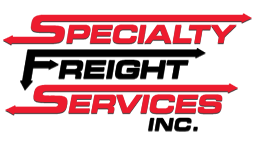Today more and more businesses are transitioning to fully automated digital processes. Whether a company is selling completely digital products, goods, or services, or they still rely primarily on foot traffic, it’s clear that the digital sphere is dominating the competition.
No market or service is safe from the influence digitization has, including the trucking/freight industry. Fleets of various sizes have begun using digital technology to streamline freight processes and exponentially grow their business.
As anyone who’s tried to run a fleet business knows, multiple parties are involved. For a more unified process and better communication between parties, more companies are ditching outdated paperwork and other manual headaches for digitization. Parties that benefit are:
● Carriers: By using real-time location tools such as predictive ETA, carriers can plan all their stops, decrease wait times, adapt to delays, and even handle loads ahead of schedule.
● Brokers: Brokers can quickly diagnose and resolve issues before or after they occur. They can also plan earlier, have reloads ready for carriers, and notify customers with current, up-to-date information regarding their freight.
● Shippers: Shippers also benefit from being able to plan their shipments more efficiently and adjust timeframes accordingly.
Of course, while carriers, brokers, and shippers are often seen as the three major components of a fleet/freight operation, many other parties benefit.
Everyone benefits from a more streamlined operation, from in-office personnel that answers questions from customers over the phone to workers operating forklifts and loading up trucks to drivers driving freight across the country.
Supply chains as a whole have greatly benefitted from digitization. Today at least half of supply chain CFOs have planned or implemented new strategies for accelerating automation processes.
Besides improving their operations, another exciting development is that many carriers have begun offering digital solutions. Many carriers already have logistics capabilities and have started using them to expand their own business and their partners.
One example is J.B. Hunt Transport. J.B. Hunt Transport first started as a tiny rice carrier from eastern Arkansas, partnering with railroads in 1989, offering delivery services across the continental United States, Canada, and Mexico, and integrating itself with the KeepTruckin Smart Load Board (now Motive).
Motive has not only seen dramatic growth–being valued at 2 billion with annual revenue of $150 million–but for many companies, it has revolutionized the way they handle freight.
The Motive app started as a way for truck drivers to track their compliance with the government, i.e., how many hours they could drive every day. Today, however, the app utilizes AI to provide drivers with the best driving route to take and other fleet management software such as automated fuel tax reporting. In addition to J.B. Hunt Transport, freight companies like Uber Freight, Convoy, and Echo Global Logistics are now using the app for their operations.
Although the freight industry still relies heavily on physical tools and services, it’s clear that the industry will continue to become more digitized as time goes on.
With the right fleet management software, supply chain logistic operations can become remarkably streamlined and straightforward to handle. This translates into faster delivery times, fewer expenses and resources, greater profits, and more transparent communication between workers.


